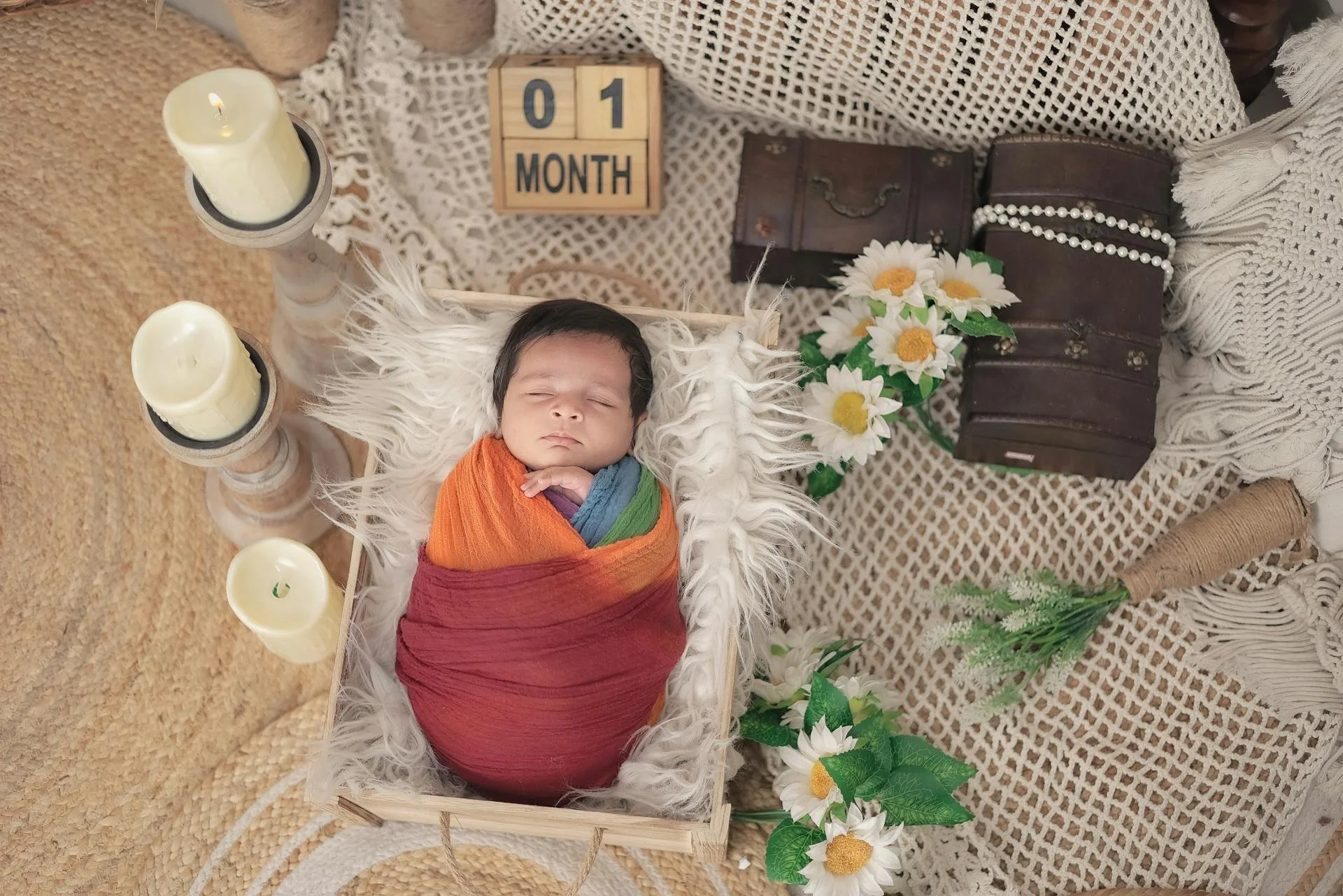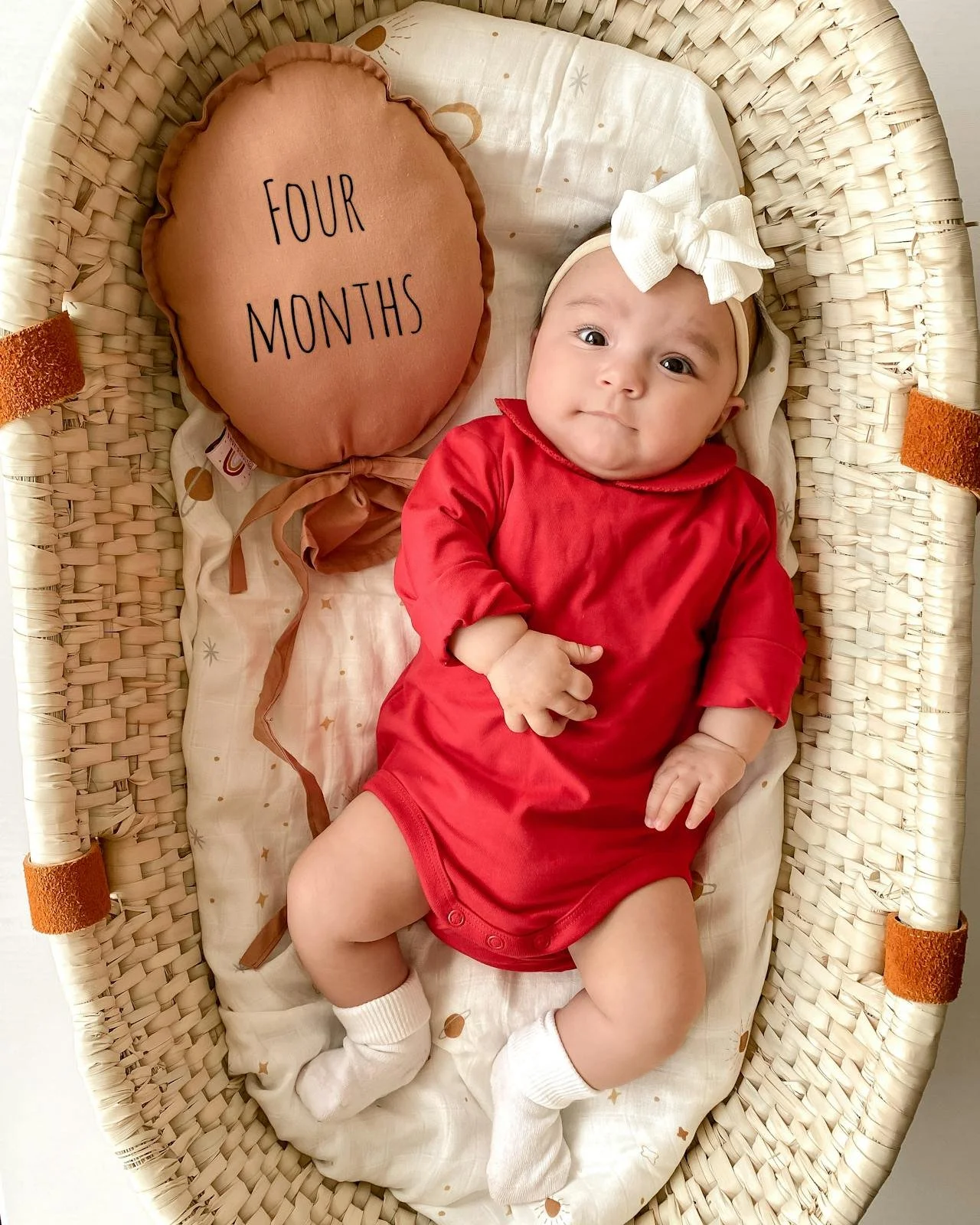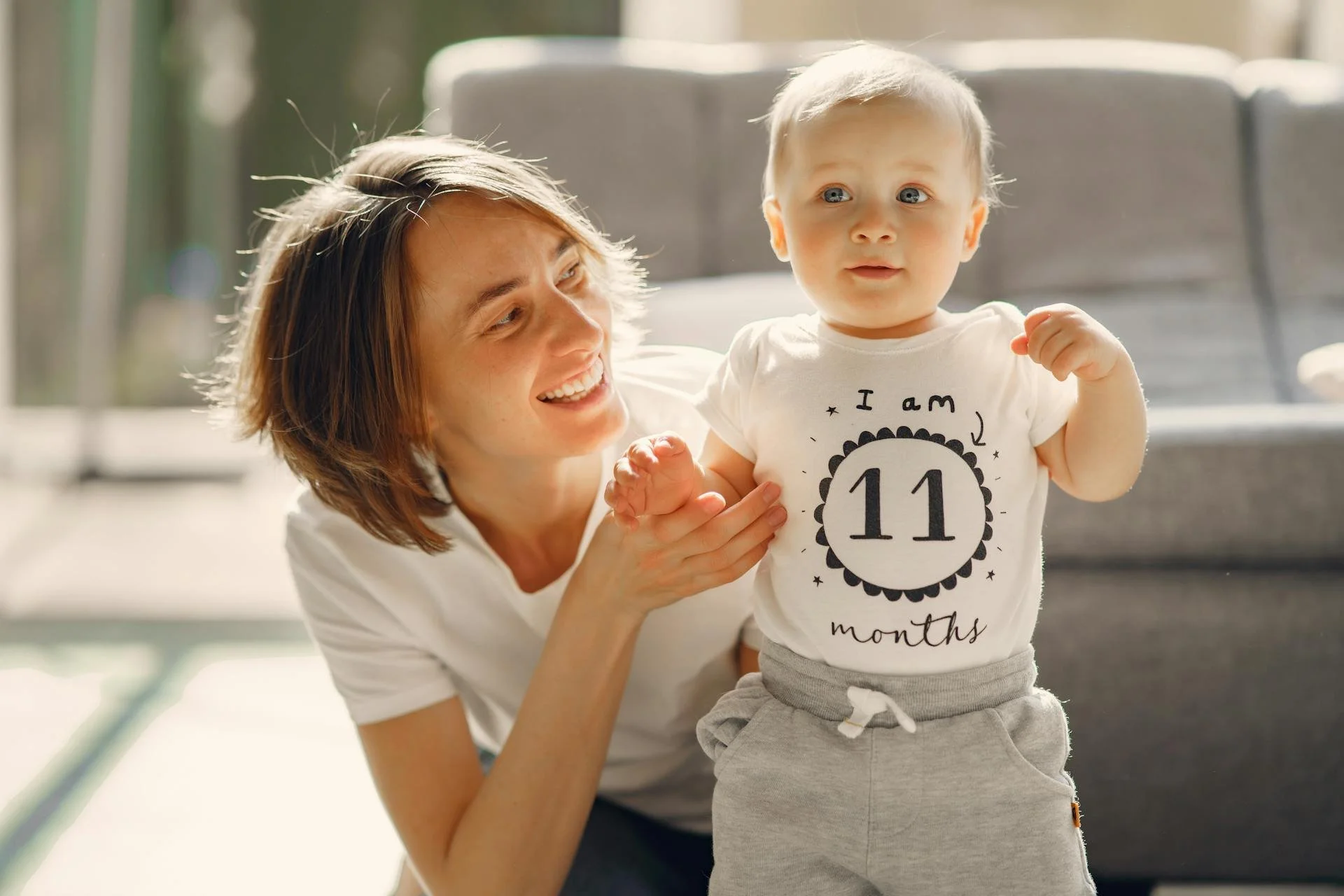New Parent Guide: Typical Milestones in a Baby's Development During the First Year
Baby Emotional Development
Welcoming a new baby is one of the most exciting and transformative moments in a parent’s life.
The first year is a time of incredible baby growth and development, filled with moments of discovery, joy, and surprise.
From the first smile to the first wobbly step, monthly baby milestones tell the story of their unique journey.
Understanding the baby developmental milestones during the first year helps parents feel more confident and connected as they nurture their little one’s progress.
This guide explores the typical child development stages: what to expect (monthly baby milestones), when milestones may happen, and how to encourage healthy, happy growth.
New Parent Guide
The Newborn Stage (0–3 Months): Growth Foundation
The first few months of your baby’s life are a period of dramatic change. In this early child development stage, your baby transitions from the quiet comfort of the womb to the bustling world around them.
Most of their energy goes toward eating, sleeping, and growing. But beneath that peaceful exterior, vital baby growth and development is underway.
The brain is rapidly forming connections that lay the groundwork for future learning, emotional bonding, and sensory awareness. By about 6 to 8 weeks, most babies begin to show social smiles, recognizing familiar faces and voices.
According to the Centers for Disease Control and Prevention (CDC, 2024), typical baby developmental milestones during this stage include lifting the head briefly during tummy time, tracking movement with their eyes, and responding to sounds or voices.
How to Support Development:
Encourage tummy time for short periods daily to build neck and shoulder strength.
Talk and sing often to your baby. Your voice stimulates early cognitive development in infants.
Offer plenty of eye contact and gentle touch to nurture emotional security.
These early moments of connection don’t just make your baby feel loved. They actively shape the architecture of their developing brain.
Baby Physical Development
Discovery Stage (4–6 Months): Exploring Through Movement
Around 4 months, babies begin to move from passive observation to active exploration. This is when many parents notice big changes in baby motor skills.
Your little one may start rolling over, reaching for toys, and grasping objects with growing precision. These calculated movements help develop coordination, balance, and strength.
Emotionally, babies become more expressive during this period. Giggles, babbles, and bright smiles mark this stage of baby emotional development.
They begin to recognize the faces of caregivers and respond enthusiastically to familiar voices.
Research from the American Academy of Pediatrics (AAP, 2024) notes that early social engagement strengthens both emotional and cognitive pathways.
Ways to Encourage Growth:
Provide toys with different textures and sounds to stimulate baby physical development.
Mirror your baby’s expressions or babbles. This supports early communication and social skills.
Allow plenty of supervised floor play to promote exploration and baby motor skills refinement.
These interactions support both baby growth and development and foster the joyful parent-child bond that anchors all learning.
Monthly Baby Milestones
Sitting & Crawling Stage (7–9 Months): Gaining Independence
By 7 to 9 months, babies become increasingly mobile. Many can sit unassisted, bounce while holding onto something, or begin crawling across the floor.
This is a key turning point in baby physical development, the start of independence. Babies learn about their surroundings through movement and touch, improving balance, coordination, and problem-solving abilities.
Cognitively, this stage introduces an exciting milestone: object permanence. Your baby begins to understand that people and things still exist even when out of sight. Peek-a-boo, once a mystery, now becomes a thrilling game.
Alongside these developments, babies may start showing stranger anxiety or separation anxiety. Both are healthy signs of emotional awareness.
To Support This Stage:
Create a safe environment for exploration by baby-proofing your space.
Offer soft blocks, balls, or stackable toys that encourage hand-eye coordination.
Continue reading aloud to your baby to enhance cognitive development in infants and language understanding.
This phase is a wonderful reminder that baby developmental milestones don’t happen in isolation. Physical, emotional, and cognitive progress are all intertwined.
Parent Bonding Activities
Standing & Cruising Stage (10–12 Months): Steps Toward Toddlerhood
As your baby approaches their first birthday, you’ll notice another leap in baby growth and development.
Around 10 months, many babies pull themselves up to stand, “cruise” along furniture, and may take their first independent steps.
Even if walking comes later, these early attempts mark a major advancement in baby motor skills and confidence.
At this point, language development begins to blossom. Babies start imitating sounds, saying “mama” or “dada,” and understanding simple directions like “come here” or “no.”
This is also a period of emotional expansion. Your baby is developing empathy and social awareness.
According to Harvard University’s Center on the Developing Child (2023), these early interactions are essential for emotional regulation and secure attachment.
Encourage Development By:
Giving your baby safe furniture to pull up on to strengthen leg muscles.
Engaging in simple games like clapping, waving, and naming objects.
Using positive reinforcement when your baby attempts to communicate or take steps.
Don’t forget that each child develops at their own pace.
Comparing your baby’s progress to others can lead to unnecessary worry. Try to celebrate each new skill as part of their unique child development stage.
Emotional & Cognitive Growth: The Invisible Milestones
While the physical achievements are easy to see, baby emotional development and cognitive development in infants often occur quietly but are equally important.
Babies are learning how to manage emotions, trust caregivers, and understand simple cause-and-effect relationships. For example, they begin realizing that when they cry, a caregiver responds. When they drop a toy, it falls to the floor.
These small discoveries build the foundation for reasoning and communication later in life.
Throughout the first year, consistent nurturing and affection help create secure attachment, which promotes confidence, curiosity, and resilience.
The World Health Organization (WHO, 2023) emphasizes that responsive caregiving (meeting a baby’s needs quickly and lovingly) is one of the most powerful predictors of healthy emotional outcomes.
Encourage Emotional Growth:
Maintain predictable routines to create a sense of security.
Use gentle, positive communication to teach trust and safety.
Offer comfort and physical closeness during stress or change.
Supporting emotional milestones is just as vital as celebrating the first crawl or baby step. Each moment of connection fuels your baby’s inner world and lifelong well-being.
Celebrate Every Step of Your Baby’s Journey
The first year of child development stages are filled with astonishing transformations.
From tiny newborn to curious explorer, each milestone in your baby’s first year lays the foundation for future success and happiness.
Remember, baby developmental milestones are guides, not deadlines—every child develops at their own rhythm. The key is to remain patient, observant, and engaged.
Parent Bonding Activities:
For the next 2 weeks, dedicate 10 minutes of uninterrupted time each day to connect with your baby through purposeful play. Try one of these:
Sing songs with gestures like “Itsy Bitsy Spider” to support baby motor skills.
Play peek-a-boo or read a picture book to build cognitive development in infants.
Practice standing or gentle walking with your baby for baby physical development.
These small, consistent moments of engagement strengthen your baby’s body and mind.
It is also the loving bond between parent and child that supports their emotional and social well-being.
Every laugh, clap, and cuddle helps your baby reach the next stage of their incredible journey. 😍
RELATED: How To Soothe a Teething Baby
References
Centers for Disease Control and Prevention (CDC). (2024). Important Milestones: Your Baby By One Year.
American Academy of Pediatrics (AAP). (2024). Caring for Your Baby and Young Child: Birth to Age 5.
Harvard University, Center on the Developing Child. (2023). The Science of Early Childhood Development.
World Health Organization (WHO). (2023). Infant and Young Child Development: Milestones and Guidance.




